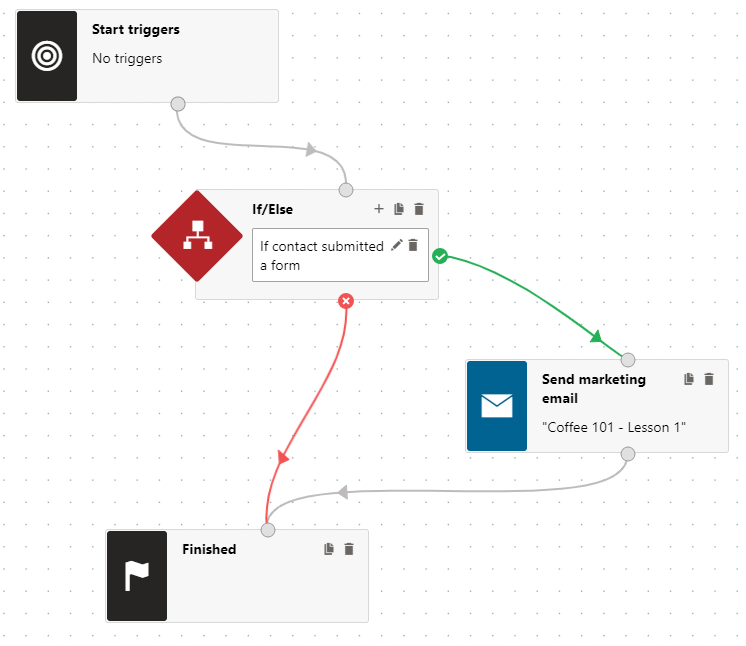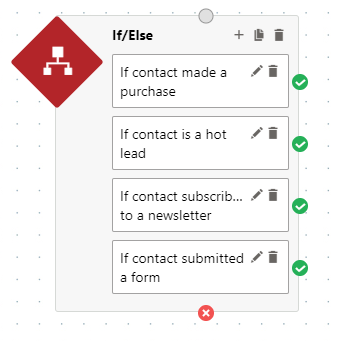Defining automatic decisions in processes
Enterprise license required
Features described on this page require the Kentico Xperience Enterprise license.
Marketing automation allows you to split processes into multiple branches. You can define conditional steps, which automatically determine how contacts continue through the process.
The system evaluates automatic decision steps based on dynamic conditions. For example, you can create conditions that check the values of the given contact’s attributes, or their previous activity on a website.
Adding conditions
The process designer provides If/Else steps, which split the process into two or more branches. You can define any number of branches by creating cases, each with its own condition.
When a contact reaches the step in the process, the system evaluates the cases according to their order. If the step finds a matching condition, the contact moves forward to the step connected to the corresponding case (the remaining cases are not evaluated). If none of the conditions are fulfilled, the process continues through the else branch.
To add an If/Else step:
- Place the If/Else step onto the grid from the designer toolbar.
- Integrate the step into the flow of the process by connecting a preceding step.
- Define cases for the step.
- Connect the else source point (red on the step’s bottom edge) to another step.
- Connect the source points of all cases to other steps.
For example, the process shown below uses a condition to send a campaign email only to contacts who fulfill a specific condition (have submitted a certain form). If the contact in the process does not meet the condition, the process moves directly to the Finished step.

Defining condition cases
Cases represent individual branches of If/Else steps.

To set up cases for a step:
Click Add new case () next to the step title to create the required number of branches.
Click Edit case properties () for each case.
- The Edit case properties dialog opens.
Specify the case’s condition in the Condition field.
(Optional) Type a text description of the condition into the Designer label field.
Open the Security tab and choose which users or roles are allowed to manually move contacts through the given case.
- By default, cases inherit the security settings of the step.
Click Save and close the dialog.
You can see the cases listed inside the step. Each case provides a separate source point for connecting the decision step to the appropriate branch of the process.
Alternatively, you can manage a step’s cases in the right-side step configuration panel. Select an If/Else step in the grid and then the Cases tab in the panel.
Changing the case order
If/Else steps evaluate the conditions of cases according to their order. If a condition is fulfilled, the contact continues through the given branch and any remaining cases are not evaluated.
To adjust the order of an If/Else step’s cases:
- Select the step in the process designer.
- In the right-side step configuration panel, open the Cases tab.
- Drag individual cases up or down to get the desired order (via the Drag to move icon next to each case).